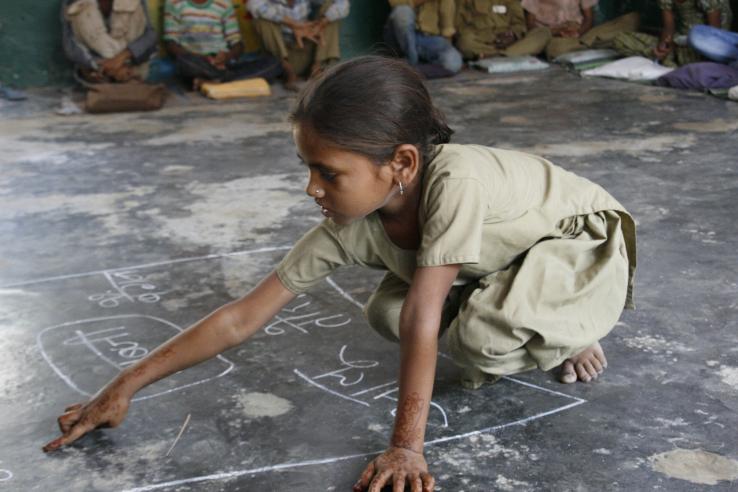Increasing student enrollment and attendance: impacts by gender

Summary
Despite substantial progress in increasing school participation overall, girls of primary school age remain less likely to be in school than boys [1]. When evaluating strategies to increase school participation, it is therefore important to analyze results by gender. A recent J-PAL review including randomized evaluations of 25 programs to increase school participation disaggregated results by gender. Most programs that improved school participation were as effective—if not more effective—for girls as they were for boys. Programs aimed at increasing participation tended to help the gender with the lowest initial attendance most.
Supporting evidence
Reducing costs and increasing perceived benefits increase participation for both boys and girls, and often girls benefit more than boys. Gender-disaggregated results of the studies included in the J-PAL review show that most programs that improved school participation overall were as effective—if not more effective—for girls as they were for boys. Of the evaluations of 25 programs with results split by gender, 14 showed no difference between boys and girls [2][3][4][5][6][7][8][9][10][11][12], and 5 improved girls’ attendance more [13][14][15][16][17]. However, these are short-term results; further research is needed to determine how impacts for each gender will differ in the long run.
Programs aimed at increasing participation tend to help the disadvantaged gender most. Girls’ enrollment and attendance are typically lower than boys’, but in two evaluations, boys started with lower attendance rates. In these cases, the programs, offered to all students, led to greater improvements for boys than for girls. In Nicaragua [18] and Colombia [19], boys had considerably lower attendance rates at baseline than girls. In these cases, impacts of CCT programs for boys were larger than for girls. Successful programs aimed at increasing participation in general tend to help the disadvantaged gender most, likely because the most marginalized students are particularly sensitive to the costs and perceived benefits of education.
There is less evidence on programs that focus on gender-specific barriers such as menstruation. Policymakers have cited gender-specific cultural barriers, such as restriction on girls’ mobility during menstruation, as a limitation on girls’ educational attainment. However, there have been few randomized evaluations that focus on alleviating gender-specific barriers. One example of a randomized evaluation in this area studied the impact of a program to reduce mobility restrictions related to menstruation for girls. The program in Nepal sought to improve girls’ attendance by providing seventh and eighth grade girls with sanitary products [20]. The evaluation found that, on average, menstruation was not a key barrier: girls only missed 0.4 days of school out of a 180-day school year due to their period. Although girls reported liking the product, it had no impact on closing this small attendance gap. More research is needed to understand the effect of gender-specific barriers on girls’ enrollment and attendance.
Abdul Latif Jameel Poverty Action Lab (J-PAL). 2018. "Increasing student enrollment and attendance: impacts by gender." J-PAL Policy Insights. Last modified February 2019. https://doi.org/10.31485/pi.2262.2018